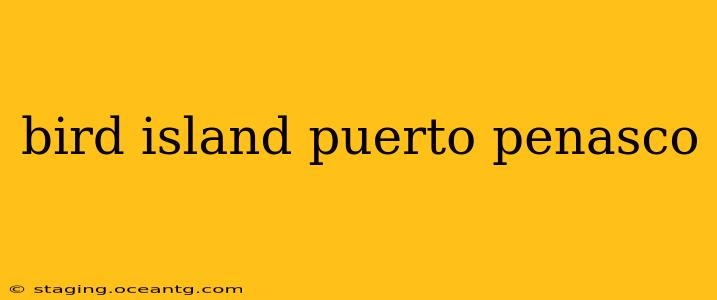Bird Island, officially known as Isla de los Pájaros, is a small, uninhabited island located just off the coast of Puerto Peñasco, Sonora, Mexico. A haven for birdwatchers and nature enthusiasts, it offers a unique opportunity to observe a diverse array of avian species in their natural habitat. Its proximity to the vibrant ecosystem of the Sea of Cortez contributes to its rich biodiversity. This guide delves into everything you need to know about Bird Island, making your visit an unforgettable experience.
What Makes Bird Island Unique?
Bird Island's uniqueness stems from its location within the Sea of Cortez, a biologically diverse region often referred to as the "Aquarium of the World." The island provides crucial nesting and roosting grounds for numerous bird species, many of which are migratory. The surrounding waters are teeming with fish, attracting a wide variety of seabirds, while the island's vegetation supports land-based species. This combination makes it a hotspot for birdwatching year-round.
What Birds Can I See on Bird Island?
The exact species you'll encounter will vary depending on the season, but you can expect to see a captivating mix of seabirds and shorebirds. Common sightings include:
- Brown Pelicans: These iconic birds are often seen soaring overhead and diving for fish.
- Various Gulls: Several gull species frequent the island, their calls echoing across the water.
- Cormorants: These sleek, dark birds are adept swimmers and fishers.
- Terns: Several tern species nest on the island, adding to the lively atmosphere.
- Herons and Egrets: These wading birds might be spotted in the shallow waters around the island.
Remember to bring your binoculars and a field guide for a more detailed identification.
How Can I Get to Bird Island?
Reaching Bird Island typically involves a boat trip from Puerto Peñasco. Several tour operators offer excursions specifically designed for birdwatching, providing transportation and expert guidance. These tours often combine a visit to Bird Island with other attractions in the area, offering a comprehensive experience. It's crucial to book your tour in advance, especially during peak season.
Is Bird Island Open to the Public?
While the island itself is uninhabited and technically open, access is typically only granted through organized tours. Independent visits are generally discouraged due to the island's delicate ecosystem and lack of infrastructure. Respecting the island's environment is paramount; leaving no trace is essential for preserving its natural beauty.
What is the Best Time to Visit Bird Island for Birdwatching?
The best time to visit is during the migratory seasons (spring and fall), when the island teems with birds traveling to and from their breeding grounds. However, you can still spot a variety of birds throughout the year.
What Should I Bring to Bird Island?
Proper preparation will enhance your experience. Pack the following:
- Binoculars: Essential for observing birds from a distance.
- Field guide: A bird identification guide specific to the region will help you identify the species you see.
- Sunscreen: Protect yourself from the sun's rays.
- Hat and sunglasses: For added sun protection.
- Camera: Capture the stunning views and incredible birds.
- Water: Stay hydrated, especially during warmer months.
Are There Other Activities Near Bird Island?
Besides birdwatching, the region around Puerto Peñasco offers diverse activities, such as:
- Sport fishing: The Sea of Cortez is renowned for its excellent sport fishing opportunities.
- Whale watching (seasonal): Depending on the time of year, whale watching tours are available.
- Exploring Puerto Peñasco: The town itself offers a variety of restaurants, shops, and cultural attractions.
Bird Island, Puerto Peñasco, offers an unforgettable birdwatching experience. By planning your trip carefully and respecting the delicate ecosystem, you can enjoy the unique beauty and biodiversity of this remarkable location. Remember to support local tour operators who prioritize sustainable practices and contribute to the conservation efforts of this precious natural resource.
